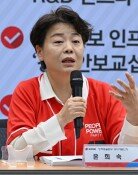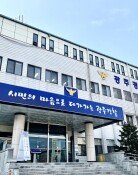[Editorial] Government Innovation?
[Editorial] Government Innovation?
Posted March. 04, 2006 03:02,
Regarding the cabinet shakeup aimed at selecting candidates for local elections scheduled for May 31, Kim Wan-gi, the senior presidential personnel secretary, said, We selected four innovation leaders (as new ministers candidates). He was referring to the governments appointment of Lee Yong-seop, the presidential secretary of innovation management, as the minister of Government Administration and Home Affairs. But is the government innovative itself?
The government assessed that each government ministry was greatly improved last year. But the accomplishments of those ministries amount to little more than setting up innovation goals or introducing an assessment system. In other words, they set up tasks to do, and secured the criteria to assess those tasks when completed. The government says that these accomplishments are great, innovative improvements, which is making people in the private sector, including corporations, laugh.
The government innovation website says that the government makes innovation efforts for six goals, including competent government, which eliminates inefficiency in administration; an open government, which guarantees the actual participation of the public; and a responsible government, which lets the public know about and assess policy procedures and accomplishments. But people are assessing that the Roh Moo-hyun administration has been an incompetent government, a participatory government run by a handful of insiders, and a government of pretexts. One might question how the government would respond to such an assessment.
The essence of government innovation is cost reduction and the improvement of administrative service. A government must conduct effective tasks with available human and material resources and according to the priority of its agendas. However, the incumbent government has a long list of tasks, which some call the garbage can of policy, and just think of collecting more taxes, saying that it cannot work because of a lack of budget. It enlarges agencies, creates new organizations, and hires more public officials, although there are officials who do not have much to do and just idle away. The document issuance service of e-government that the administration has been boasting about was suspended for a while due to the possibility of falsification.
Even under these circumstances, Oh Young-gyo, the minister of Government Administration and Home Affairs, who will run for the local elections, said, As the public does not know much about government innovations, we will build a public relations center.
This makes one wonder what the innovation leaders of the government learned from the government innovation of Britains Margaret Thatcher administration, which centered on privatization and reduction of welfare, and the small government, deregulation and efficient government administration which the U.S., Australia, New Zealand and Japan have followed.







